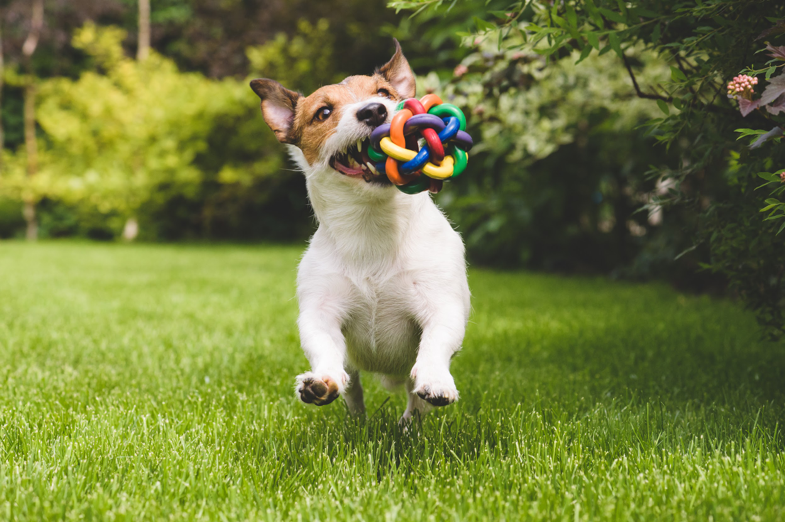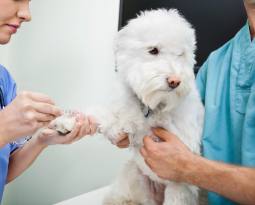Welcome back to the Acoma Animal Clinic blog! Today we want to help you understand why your dog may be acting weird lately. If you’re unsure whether your dog is showing symptoms of illness or distress it is always best to consult your veterinarian to discuss what may be the issue. Because our dogs cannot communicate with us through words we must pay close attention to what they demonstrate through their physical and behavioral changes.
There are a few common symptoms to be aware of and what they may mean, but if you are ever unsure please reach out to your vet for a consultation or appointment to avoid any long-term symptoms to your dog. We want to list a few of the possible symptoms your dog may show and what they may mean, but symptoms may vary between dogs and illnesses.
Behavioral changes can be your first indicator that something is wrong with your dog. If interest is lost in playing games, going for walks, eating, and sudden lethargy are good key indicators that something is wrong, and your dog is trying to tell you in their own way.
Vomiting and Diarrhea
If your dog (especially puppy) is playing outside eating grass, leaves, and anything else in sight they may vomit or have diarrhea following that, which is nothing to be concerned about. But when your dog is vomiting multiple times throughout the day, does not eat or drink, and seems under the weather in attitude should be brought to the attention of your vet.
If your dog also has blood in their vomiting or stool that should be taken seriously as it can be caused by a blockage in the intestines, ulcers, or other serious illnesses. Be sure to pay attention to your dog when you see a consistency throughout the day of lethargic movements along with these two symptoms.
Lack of Appetite
While lack of appetite can mean many things and not be serious. Dogs can stop eating and drinking because of stress, fever, pain, and many more reasons. If your dog has not eaten for up to 24 hours you should take he/she in to the vet immediately.
This does not include your dog being picky about breakfast or dinner waiting for table food, this is in reference to your dog not touching any food or water due to serious intestinal issues. The vet will be able to quickly tell with possibly a few x-rays, blood tests, or other matters what is wrong and be quick to help you and your furry friend.
Loss of Thirst
Not drinking water is often more of a concern than not eating. Just think how often you reach for water, soda, or anything to quench your thirst. If your dog is not going to the water bowl, try to bring the bowl to them and raise it to their lips. Coax them a little by swirling your finger in the water and putting your finger under their lips to give the feeling of the water on their lips.
A good test of dehydration is by picking up the skin on the back of your dogs’ neck. If it does not go down and flatten immediately, but rather stays up a few moments then they need water as soon as possible. If after trying everything to get your dog to drink, take them to the vet for an IV and discuss what may be happening with your dogs’ doctor.
Urination Frequency
While excessive thirst and urination may signal diabetes, it can also signal liver or kidney disease as well as adrenal gland disease. Increased urination may mean house trained dogs begin to urinate in the house throughout the day, and possibly wet themselves and their bed.
However, if your dog is straining to urinate and urination has decreased drastically may signal a urinary tract infection or bladder stones. If there is blood within your dog’s urine it evident that there are possible issues. So, while you take notice of the straining or increased urination patterns begin to look for blood as well. All of these symptoms require a vet’s care immediately.
Stiffness or Difficulty Rising
Dogs that have difficulty standing on one leg or rising from the ground may have issues with a hip or the spine. Often times dogs will have hip dysplasia, displaced discs, spine arthritis, or torn ligaments.
Larger dogs tend to have more issues with arthritis and hip, elbow, and shoulder dysplasia due to their weight and size. While this is also common in smaller dogs it may not be as evident due to the owner possibly carrying them around and not noticing the issues with rising and falling.
Overall, you are the best person to decide when you need to take your dog to the vet. These are just a few mentions of what may be bothering your dog, but if you are unsure of anything call your vet or bring them down to the vet’s office to have a good look through. Any questions you may have regarding your dog contact us. There can never be too many precautions when taking care of your fluffy friend!





